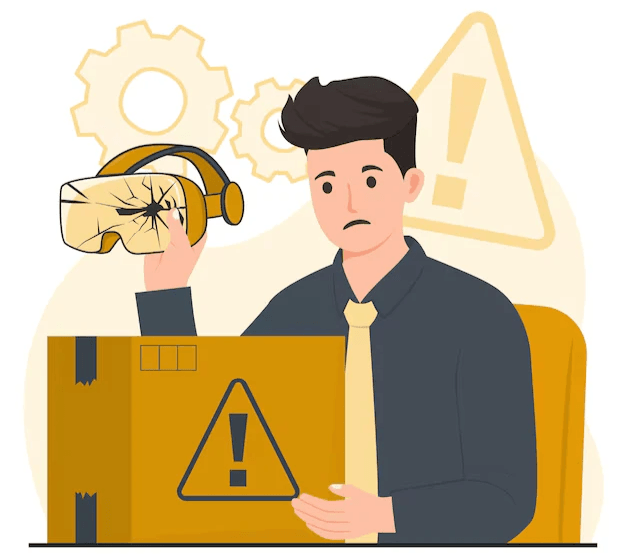The Costly Mistake That Could Destroy Your Business Overnight (And Make You Question All Your Life Choices)
Imagine investing thousands of dollars in a product, only to receive a shipment that looks nothing like the perfect sample you approved. Picture yourself opening that first box, your excitement quickly transforming into the kind of horror usually reserved for realizing you've been walking around all day with your pants unzipped. This nightmare scenario happens more often than you'd think—especially when importing from China, where sample expectations and production realities can have a relationship as distant as your New Year's resolutions by February.
Welcome to the world of international importing, where hope and reality often collide like a shopping cart and your ankles.

The Sample Trap: Why What You See Is NOT What You Get (It's Like Dating Profile Photos From 10 Years Ago)
Meet Rose, a savvy entrepreneur with killer marketing skills who fell into the most common trap in international sourcing: believing that a perfect sample guarantees a perfect production run. She had the confidence of someone who's just discovered a "secret" diet hack that millions somehow missed.
When Rose received her initial samples and declared them "perfect," she was ready to place a massive order faster than you can say "wire transfer." But here's the critical warning every importer needs to understand: Samples are NOT a guarantee of production quality. They're more like movie trailers—showing all the best parts while conveniently leaving out the scene where the hero's dog dies.
5 Eye-Opening Sample Scenarios Every Importer Must Understand (Before You're Explaining to Investors Why You Have a Warehouse Full of Unusable Products)
1. The "Bait and Switch" Deception (Or: That Time You Thought You Were Getting Filet Mignon But Received Mystery Meat)
Some factories have a secret weapon: a showcase room filled with top-tier samples purchased from leading manufacturers, displayed with the proud confidence of a cat that just knocked something off your shelf. They'll happily send you their absolute best—knowing full well they might not reproduce that quality in your actual order.
What's Really Happening: Imagine a restaurant sending Gordon Ramsay to cook your sample meal, then having the dishwasher prepare your actual order. That perfect sample might have been:
- Made by their most skilled worker (who has since retired to a beach somewhere)
- Hand-crafted with loving attention (unlike the rushed assembly line production)
- Possibly not even made by them at all (surprise!)
2. The Specification Minefield (Where Tiny Details Become Massive Problems)
Think you're getting exactly what you want? Think again. You might as well be playing darts blindfolded while riding a mechanical bull. Take plastic bags, for example. A factory might send a sample of a 30-micron thick bag but produce your order with a flimsy 15-micron version—50% less material, same appearance, and approximately 100% more customer complaints.
Pro Tip: Always specify EXACT specifications in painful detail. Leave nothing to interpretation or creativity. Your manufacturing contract should read less like a suggestion and more like instructions for disarming a bomb.
Real-World Example: "We specified 'red' and got everything from fire-engine scarlet to something that looked like it came from a crime scene. Apparently, 'red' has more interpretations than a Shakespeare play."

3. Production Chaos: When Everything Goes Wrong (And Nobody Warned You It Could)
Bizarre but true: Factory issues can torpedo your entire production faster than a toddler can destroy a tidy living room. We've seen quality collapse due to:
- Machinery misalignment (apparently, calibration is more "suggestion" than "requirement" for some)
- Seasonal material variations (surprise: humidity affects materials! Who knew? Everyone except you, apparently)
- Even internal factory drama (like a divorce splitting owner attention—yes, your product quality might depend on someone's marriage stability)
The Harsh Reality: Your production quality can be affected by factors ranging from power outages to the factory owner's son needing tuition money. It's like butterfly effect theory, but with your profit margins as the ultimate victim.
4. The Paradoxical "Bad Sample, Good Product" (When Pessimism Saves the Day)
Sometimes, a mediocre sample can actually come from a great manufacturer, like finding out the person with the terrible dating profile is actually your soulmate. A slight painting imperfection doesn't mean the entire production will be subpar.
What's Happening: Some factories are better at mass production than one-offs. They're like restaurants that can feed a wedding perfectly but somehow burn toast when cooking for one person.
The Lesson: Don't automatically reject a supplier because of minor sample issues. Sometimes perfectionism at the sample stage means they're being honest about their capabilities—a refreshing quality in international business, like finding an honest car mechanic or a weight loss ad that admits diet and exercise are involved.
5. When Good Factories Say "No Samples" (It's Not You, It's Them... No Really, It Is)
Counterintuitively, a factory refusing to send samples isn't always a red flag. It might be as shocking as finding out that your cat actually does love you, but top manufacturers might:
- Protect their unique processes (their secret sauce is actually secret)
- Have abundant existing orders (they're the manufacturing equivalent of "playing hard to get")
- Fear design theft (because your brilliant idea might not be the first time they've seen it)
What It Means: Sometimes, the hardest-to-get factories are the ones most worth pursuing. They're like that exclusive restaurant with no sign that still has a two-month waiting list.

Your Sourcing Survival Guide (Or: How to Sleep at Night Despite Entrusting Your Business to People You've Never Met)
🚨 Critical Takeaways:
- Never skip Quality Control (QC)—it's like skipping the pre-purchase inspection when buying a used car from someone named "Lucky"
- Understand samples are just a preview, not a promise—like movie trailers that make terrible films look amazing
- Prepare for potential variations—your expectations should be as flexible as a yoga instructor
- Communicate specifications exhaustively—if you haven't annoyed yourself with the level of detail, you haven't been detailed enough
- Work with experienced sourcing partners who have seen more factory disasters than you've had hot dinners
Emergency Response Plan:
When things go wrong (and statistically speaking, at some point they will):
- Don't panic immediately (save that for later, preferably in private)
- Document everything (pictures are worth a thousand words, especially in dispute resolution)
- Communicate issues clearly (anger feels good but solves little)
- Understand your leverage (hint: money not yet paid speaks volumes)
The Bottom Line (Where We Get Philosophical About Cardboard Boxes Full of Disappointment)
Importing isn't just about finding a factory—it's about understanding the complex ecosystem of international manufacturing, complete with its own unwritten rules, cultural expectations, and occasional dramatic plot twists. Every sample tells a story, but not always the story you expect. It's more like reading the first chapter of a mystery novel and trying to guess the ending.
Remember: In the world of importing, trust is good, verification is better, and a healthy dose of strategic pessimism might just save your business.